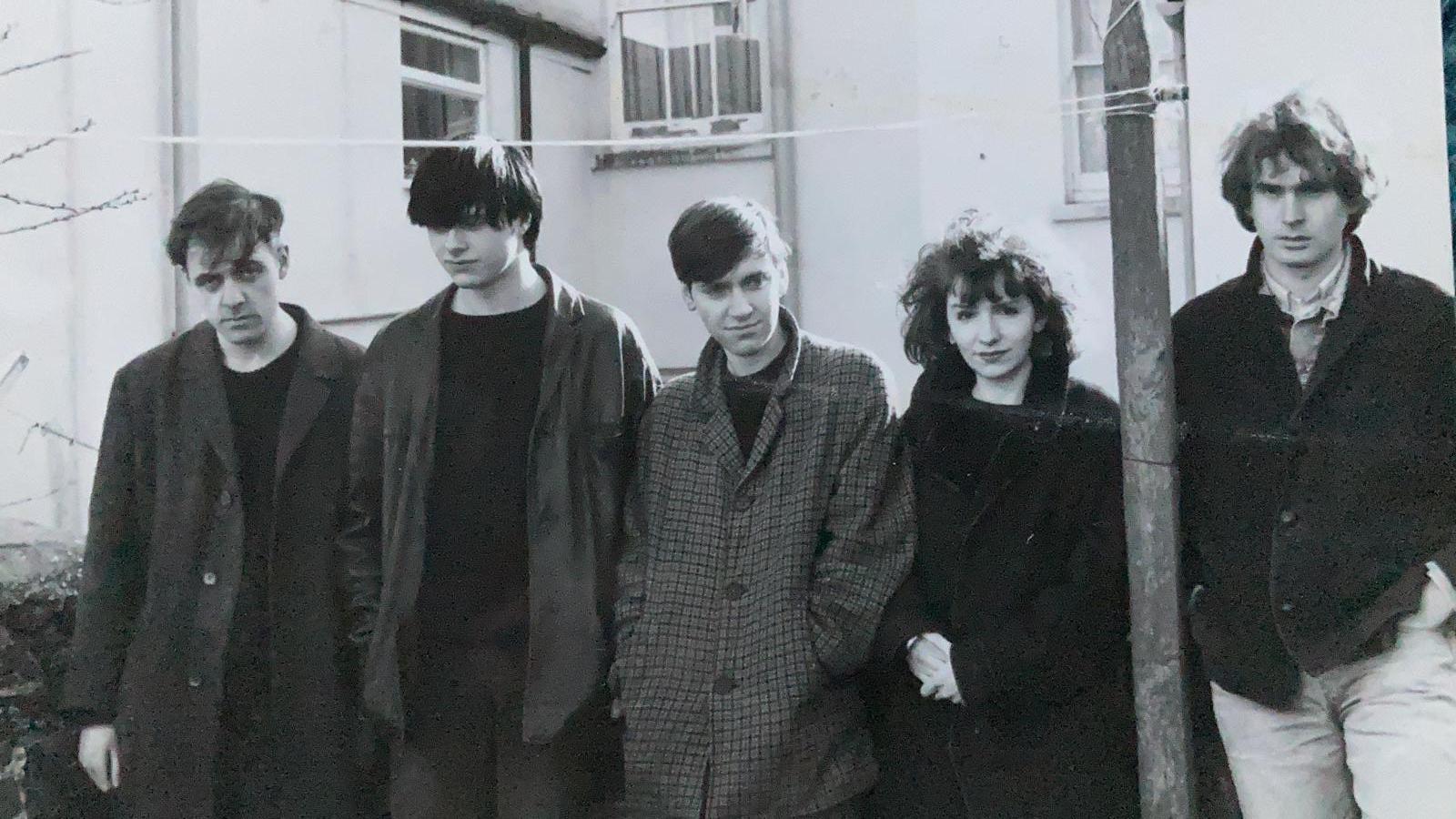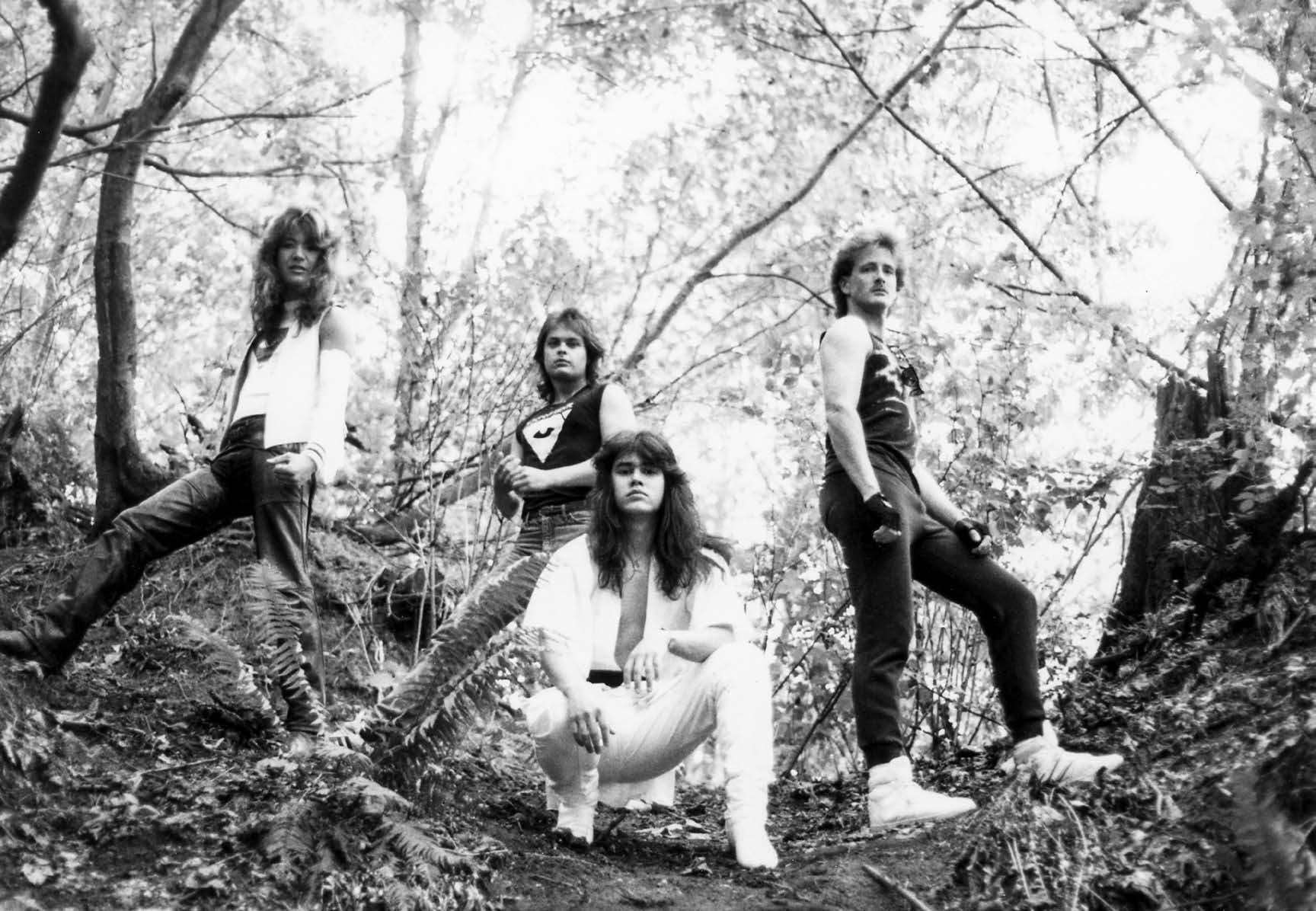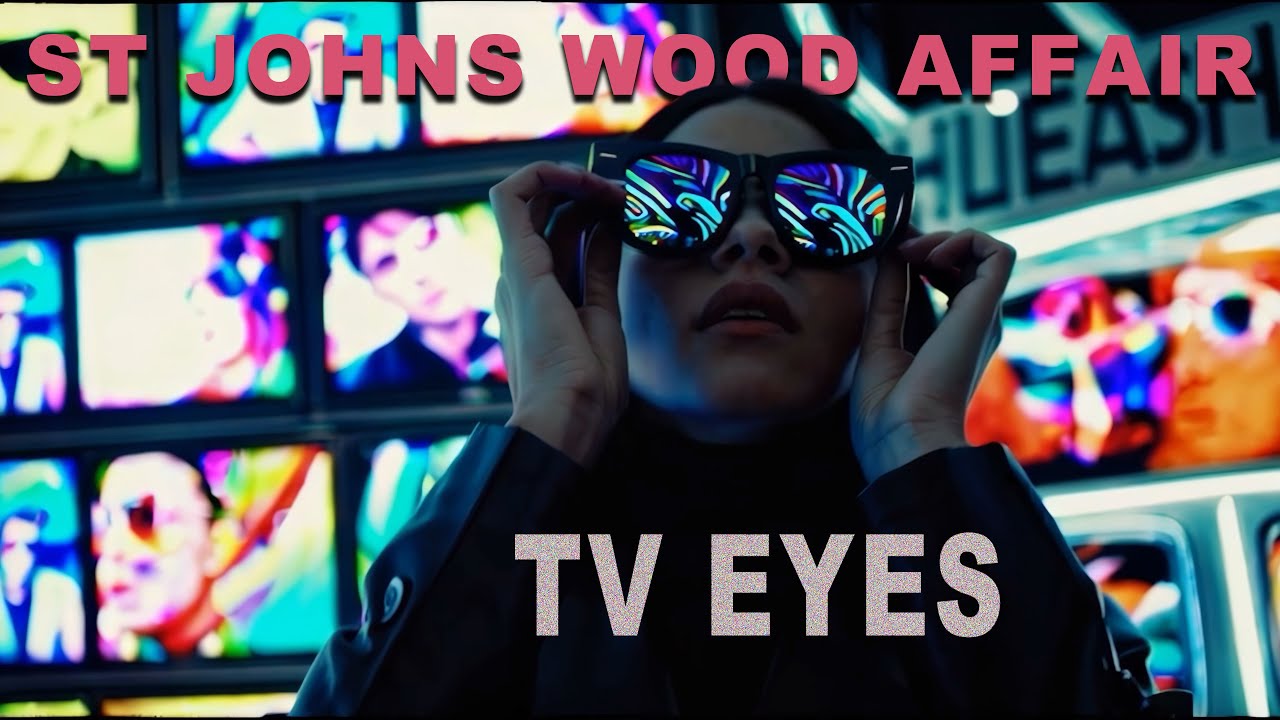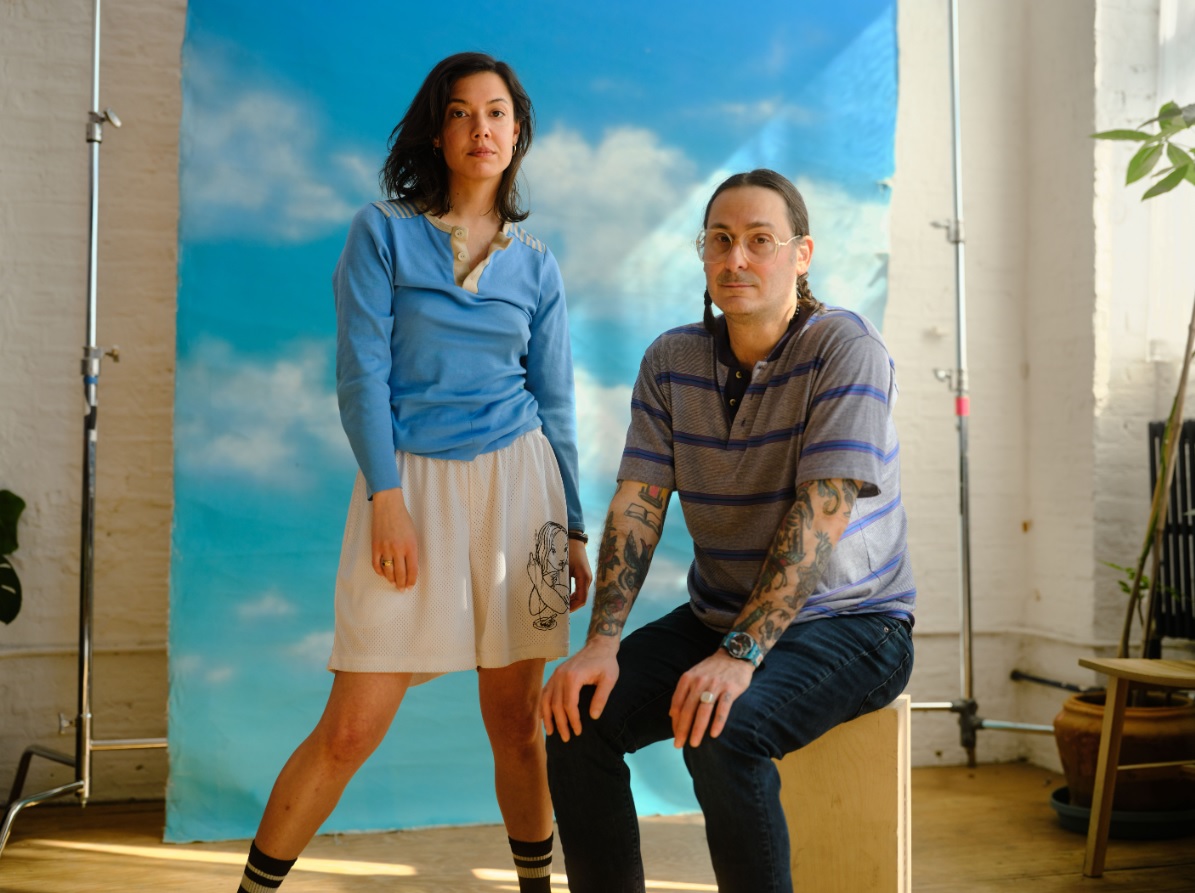14 Iced Bears | Interview | “I loved the sense of freedom and adventure”
14 Iced Bears originally began in 1985 and were part of the C86 wave, although they developed a more psychedelic oriented sound.
Optic Nerve Recordings reissued both of their albums. The 14 Iced Bears were formed within a vibrant indie scene in Brighton in 1985 by Robert Sekula and drummer Nick Emery, with a punky, DIY pop ethic that held melody as key and technical expertise as less of an issue. They were spotted at their first gig by-ex Television Personalities bassist Mark Flunder, who decided that he wanted to put out a 14 Iced Bears single on the fledgling Frank Records and ‘Inside,’ was released in late 1986. On hearing it, legendary BBC 1 Radio 1 DJ John Peel booked them in for a session. His enthusiasm was evident. He made it one of his sessions of the year and praised each track in turn after playing it. ‘Balloon Song’ was featured in the session and the single version which fronted the bands second single, ‘The Importance of Being Frank EP’ further consolidated their following. The band toured England and Europe and the press was ecstatic. A third single sealed the deal, the raucous ‘Come Get Me’ on the seminal indie label Sarah Records. The band went on to release their self-titled debut album in 1988; it was a masterpiece of psychedelic pop that turned a lot of heads with its ambition and skilled songcraft.
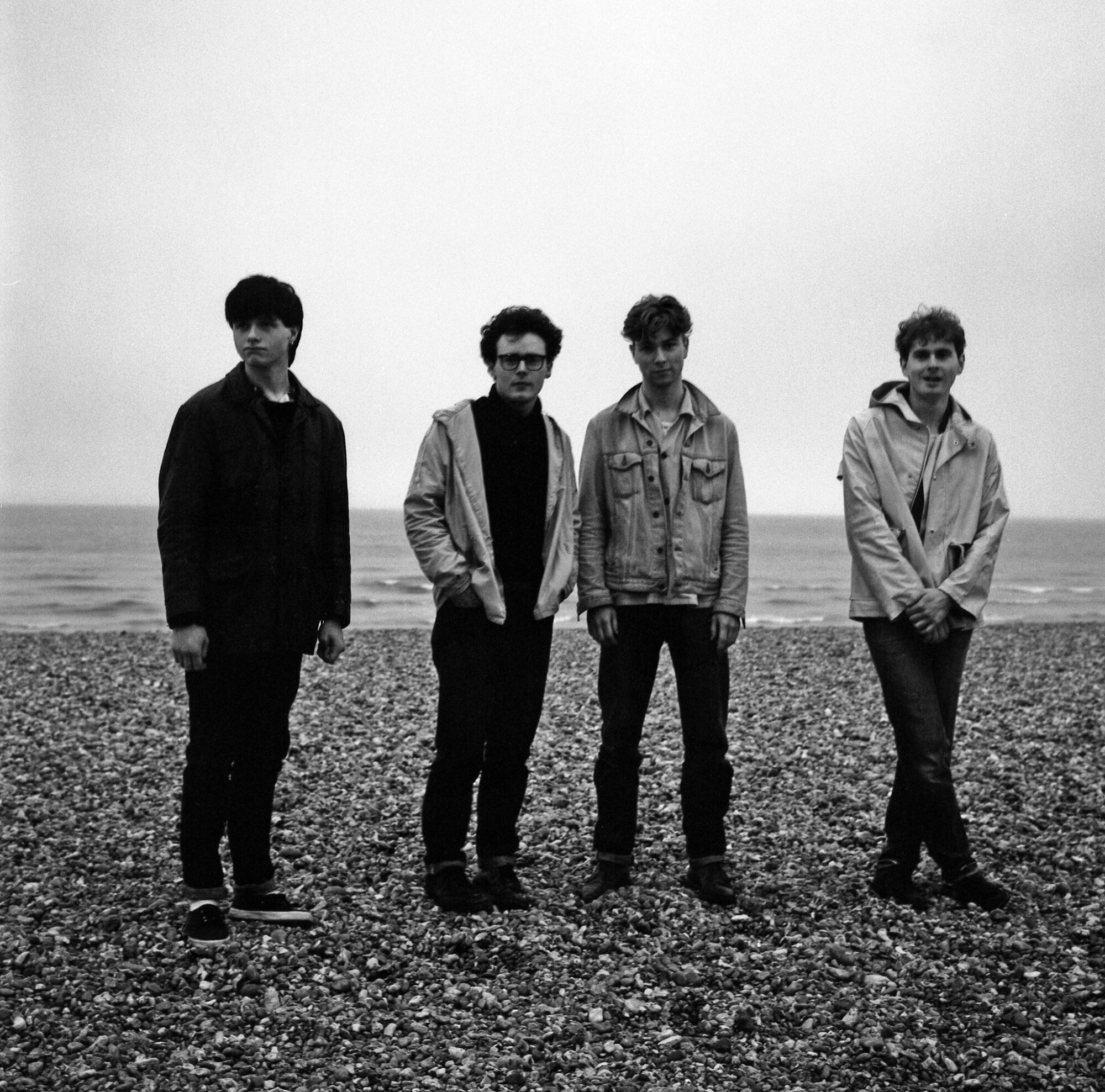
“I loved the sense of freedom and adventure”
It’s really wonderful to have you. Optic Nerve did a fantastic reissue on double vinyl. How involved were you with the process and how do you enjoy the sound?
Rob Sekula: Hello, Klemen. Thanks for asking. The Optic Nerve stuff came out in 2017. It was great to get all our stuff together on vinyl like that. People love to chuck a record on sometimes, I know I do. Cherry Red (our publisher) and Optic Nerve sorted it but we okayed the way it was done. Very happy with it all.
Tim White: Yes the Optic Nerve re-issue was great. I’m a big fan of vinyl. Also the shoot I did with the band around the time of ‘Wonder’ was extensively used on the sleeve which was nice to see – Using the old tripod / timer / run round get in the picture method. Not an exact science but did the job.
Graham Durrant: Yes, it’s always exciting to get a fresh new pressing with all the artwork, especially on vinyl. Didn’t have much to do with this release but my brother did the original photo shoot for the first LP (with the fluid wheel projector) in the studio he worked at in London.
Would love it if you could talk a bit about background. Were you all from Brighton? What was it like to grow up there in the 80s? Were there a lot of things happening?
Rob Sekula: I think only Will Taylor (bass player from the first LP) was actually from Brighton. I grew up in Camberwell, South London. I don’t know what it was like there in Brighton, but I was mainly playing football on South London council estates or painting WWII soldiers. I loved the pop music of the 70s, which was when I grew up. Anything from David Cassidy to Marc Bolan to Bowie to Brotherhood of Man! I was forced to practise piano and recorder every day, as my school teachers told my mum I was very musical. I only liked Beethoven and a bit of Mendelssohn. It was getting in the way of playing football! It was lovely of my mum to encourage me to be musical though. Very grateful. By the 80s, I was into stuff like The Jam, Echo & the Bunnymen and Teardrop Explodes. They were all in London and I went to all the gigs. I was wearing my combat jacket at the Bunnymen’s first non-military gig, and had a third row seat for the Teardrops at Hammersmith. I even saw Julian Cope playing bass for Wah! Heat when Pete Wylie broke his leg. It was really exciting to be young at the time.
Graham Durrant: Yes, we were all living in Brighton when we formed but most of us had come to Brighton as students and, like everyone else, stayed as it’s such a cool place. It’s a very compact place (unlike London) and there has always been a very large student population so the density of clubs and venues is very high and it’s probably the most liberal and arty city in the UK – literally everybody is in a band down here. I remember there was a very lively music scene in the 80s/early 90s and Brighton suddenly became the cool place to be with people like Primal Scream choosing to move down here. There was also the emergence of the dance movement around that time with a lot of free raves on the beach before it got commercialised and the police cracked down on it. Just a really cool place to live.
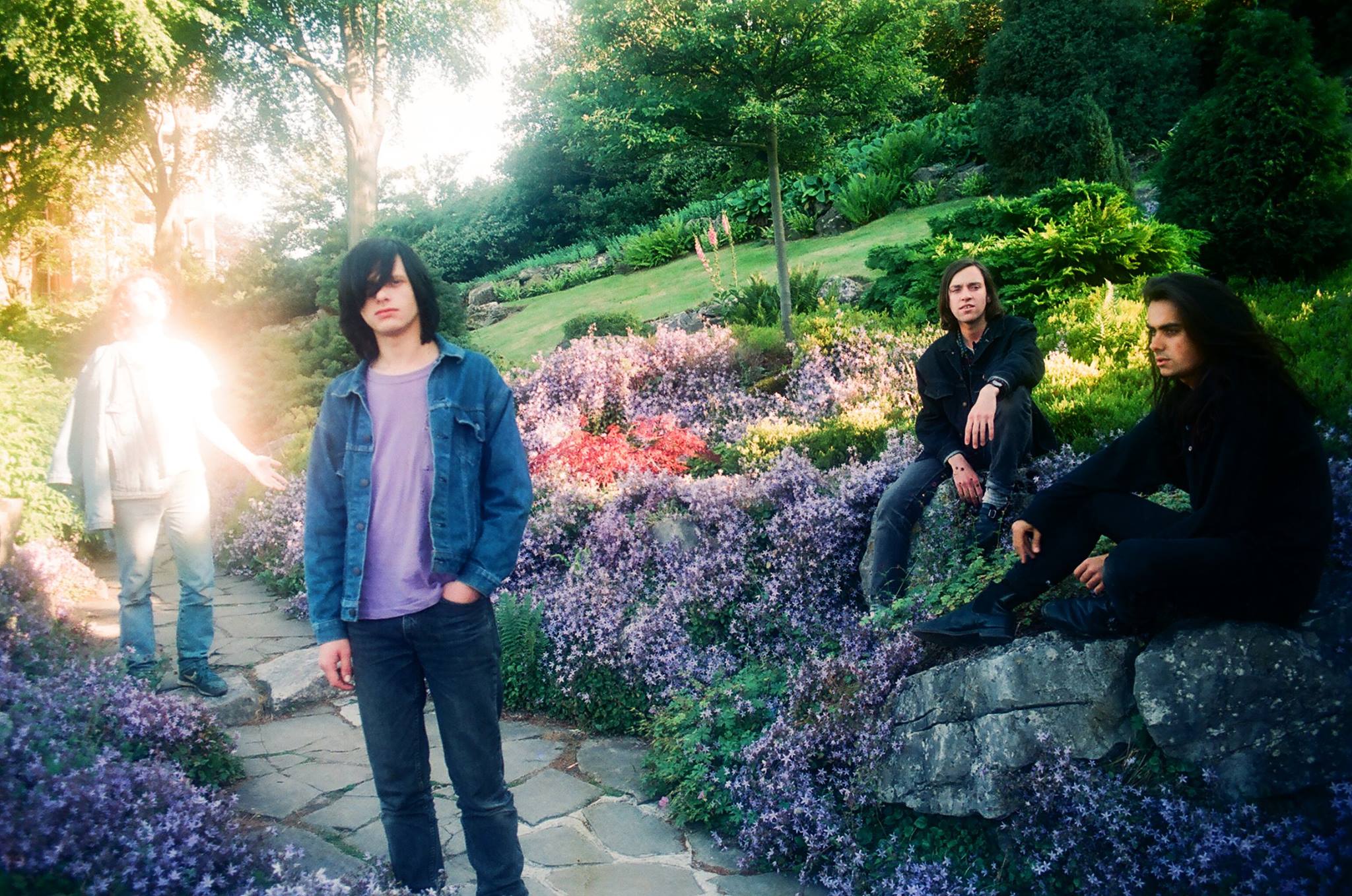
Were you part of any local scene back then? Did you have any hangout places where you and your friends listened to music and did stuff?
Rob Sekula: I didn’t know of a local scene, although Camberwell has a famous arts school, where Syd Barrett and John Cale went, which was behind my estate, so I used to see student types around. I started going to the local student bar, The Grove. You were less likely to get beaten up there! My friends and I would go round each other’s houses to listen to music. I formed a Joy Divisionesque band with my friend, Eddie, and a drum machine. I think we played one gig with our friends. It wasn’t till I went to uni in Brighton in 83 that I got a proper band together (that was the 14 Iced Bears).
Tim White: I went to Brighton in 1986 to study “Fine Art” at Brighton Uni – I’m originally from Brentwood in Essex. Brighton in the late 80s early 90s was a great place to live and spend your early 20s. So much so that I ended up staying for three years after finishing my degree. The music scene was very diverse and centred around a few well established venues like the Zap Club and The Escape – Dance was obviously huge and my first job after Uni was creating visuals for the newly extended Zap club. A VJ in today’s terminology. I worked with the local DJs of the time one such emerging DJ was Carl Cox who for a while took me under his wing and we worked together at various venues and parties throughout Sussex. Exciting as the dance scene was back then, my heart was always with a more indie retro guitar sound. So nights off were spent at Brighton’s indie clubs like The Escapes “Sunshine Playroom”. I recall hearing ‘Mother Sleep’ by a local band called the 14 Iced Bears and thinking it sounded pretty cool… I’d seen Rob around town and ended up shooting the video for ‘World I Love’. Rob and I became mates and I ended up joining the band on bass shortly after… I remember the gig before I joined, Lush supported them and I did my psychedelic projections Pink Floyd style. A few weeks later I was in the band supporting Slowdive – I think we pinched their rider…
Graham Durrant: There were a couple of legendary indie club nights that we all went to. One was “The Basement” which was owned by the art school and was, as the name suggests, a damp, vaulted cellar with condensation running down the walls and a fog of smoke when they opened the door. Brilliant club nights and great bands. The other go-to indie night was “The Sunshine Playroom,” another basement club on the seafront. Famous for watered-down beer and killer music.
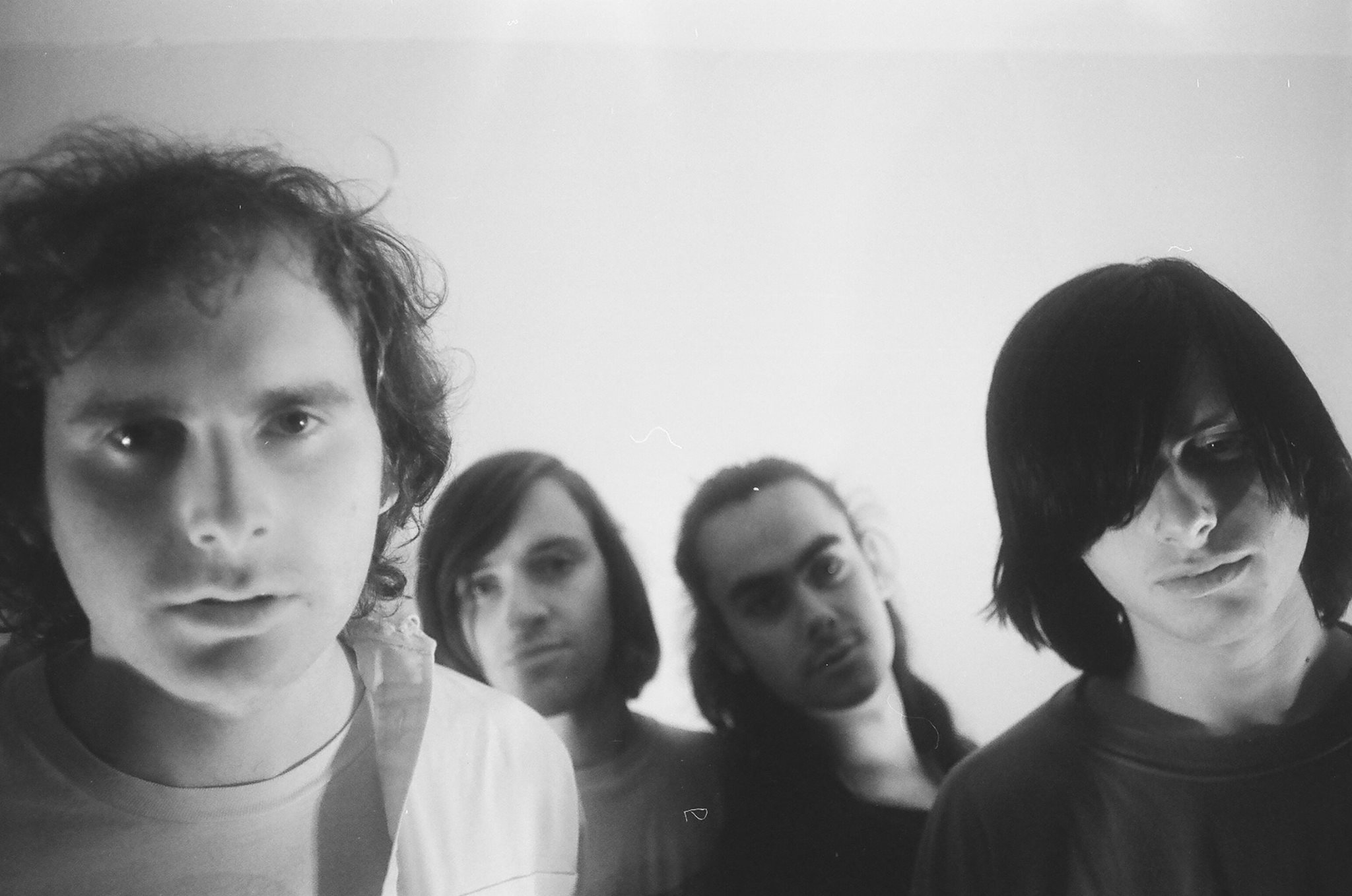
You are a band that is well connected with the C86 music scene, in your own words, how would you describe this particular scene and what made it unique in your opinion?
Rob Sekula: Around 1985, the Big Twang club started in Brighton. They put all the emerging bands on and had a disco where we all danced to new indie stuff, as well as psyche pop and sixties girl bands. It was a great scene and really exciting to be part of. The Big Twang lot, with their fanzines, badges et cetera were our version of what was happening across the country. It was a wave of kids, sick of “alternative” and wanting to do something fresh. We got to support bands like Wedding Present and Felt at the club, which was amazing.
Tim White: C86 came before my time with the band and was quite unique in so far as it was a brief period and only really included a handful of bands, but acted as a precursor to the more populated Shoegaze and later Brit Pop movements.
Graham Durrant: Like all music scene categories, C86 was a bit of a catch-all for bands that were around at that time and weren’t necessarily connected, but I guess there was a general vibe at that time. It was really about taking the energy and the “anyone can do it” mentality of punk but getting back to the power of the song and melody rather than just raw aggression.
Were members of any other bands before forming 14 Iced Bears? Any recordings of that?
Rob Sekula: I was in the band with my mate from school, mentioned above. I also got a band together when I started uni called the Velvet Underground. We did covers of Velvets stuff but never got to play. But we were possibly the world’s first tribute band! Not sure what the other Bears did, there were quite a few by the end.
Graham Durrant: I was in a few student bands before the Bears but nothing that got properly recorded really.
What led to the formation of 14 Iced Bears and how did you choose the quite unusual name?
Graham Durrant: I think that’s a question for Rob – it’s shrouded in mystery!
Rob Sekula: When I got to uni my first aim was to start a band. Me and my mate there, Nick Emery (our first drummer), then started to advertise for people… I initially used to tell people, for a laugh, it was something that happened to me as a kid but the truth about the name is more based around supermarkets, biscuits and Johan Cruyff.
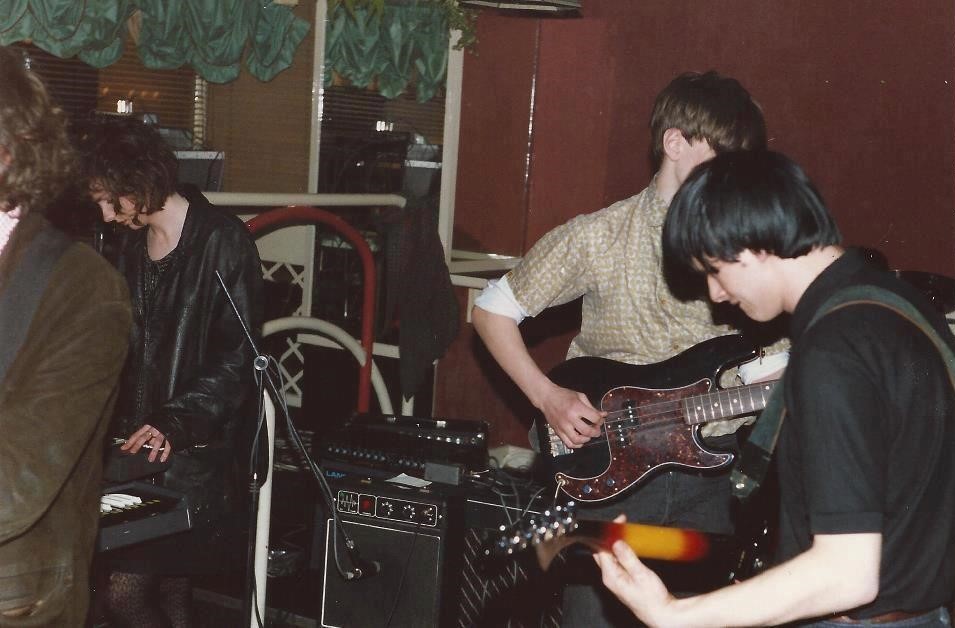
Tell me about Thunderball Records, was this basically a label you started to release your own music? What did the distribution look like?
Rob Sekula: No, the label was run by an indie kid from Harlow, Essex called Graeme Sinclair aka Beer Monster. When I was first introduced to him at a party he gave me a fairly friendly headbutt. Literally, a nutter!! He made the Carry on Disarming video that featured loads of contemporary indie bands. I think it was sold via the NME. He was a fan of our stuff and he got things going regarding the album for us. I think it was distributed via the Cartel.
Tim White: Thunderball was run by a lovely guy called Dave Minns. He was a lover of all things retro, He represented Gene Clark in the UK which I recall impressed us. We received the princely sum of £1000 as an advance for the ‘Wonder’ album – most of which was obviously spent down the pub.
Graham Durrant: Thuderball was a label that approached us with a decent budget to record the second album properly in my friend’s converted farm studio in deepest Norfolk. It was quite a contrast to the 16 track studio we did the Sarah EP at and the low budget 24 track (held together with string) that we did the first LP at in London. Unfortunately, there wasn’t any budget left to promote the ‘Wonder’ album once it had been pressed, otherwise I think it might have been more successful.
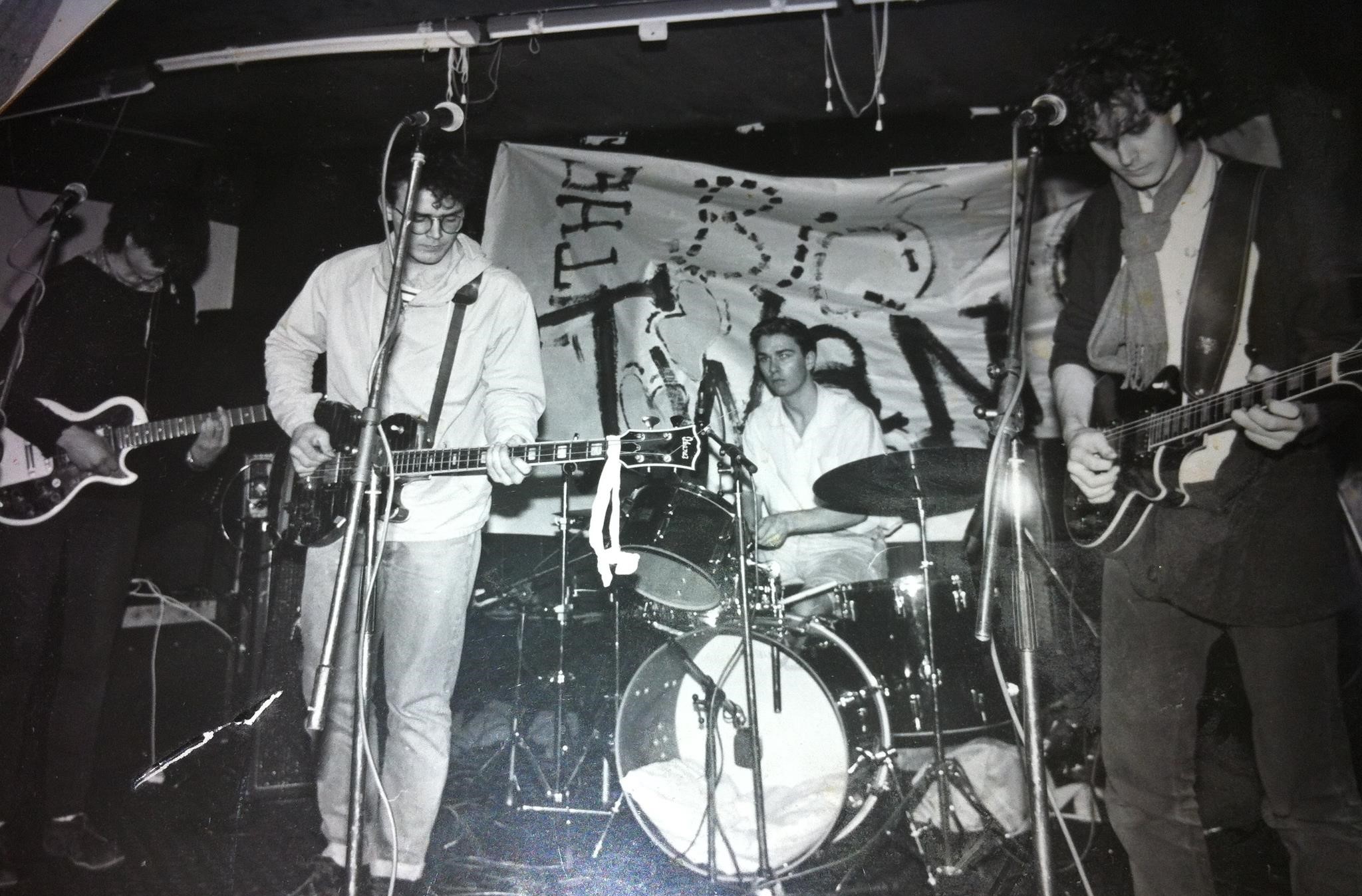
What’s the story behind your debut album? Where did you record it? What kind of equipment did you use and who was the producer? How many hours did you spend in the studio?
Rob Sekula: We recorded during a very hot summer week or less in Turnpike Lane, North London. Electrorhythm Studios with Wilson Sharp and Johnny Fraser-Binnie. We all caught some weird flu as we sat in this tiny basement of a terraced house. Perhaps it gave the album a slightly claustrophobic atmosphere. I had a two-watt Hornby amp that I loved the sound of and used it quite a bit on the album, the chords on Holland, for instance. I used to play it at gigs, much to the annoyance of certain band members.
Graham Durrant: In true Bears style, the first LP was done in a ramshackle studio in Hackney. It was boiling hot and all the equipment was half working. They had a 24 track tape with no eraser head so they used a broken-up magnet taped to a stick! It didn’t have a tape counter either so they had to judge where the tape was by “feel.” One hilarious occasion, we borrowed a bit of tape that had some free space on it from the famous motorbike stunt rider, Eddie Kidd who also used that studio. Unfortunately, the engineer misjudged how far he had run the recording and wiped over a chunk of Eddie’s recording. They had to apologise over the phone but Eddie was pretty chilled about it. They also didn’t have a proper 24 track mixing desk, just a 16 track with an 8 track shoved on the end. So all the EQ knobs were different. This didn’t help when we wanted to do backwards recording effects because you have to turn the tape upside down and then all the desk tracks are reversed. Come to think of it, I don’t really know how we managed to make that album at all, that studio was pants!
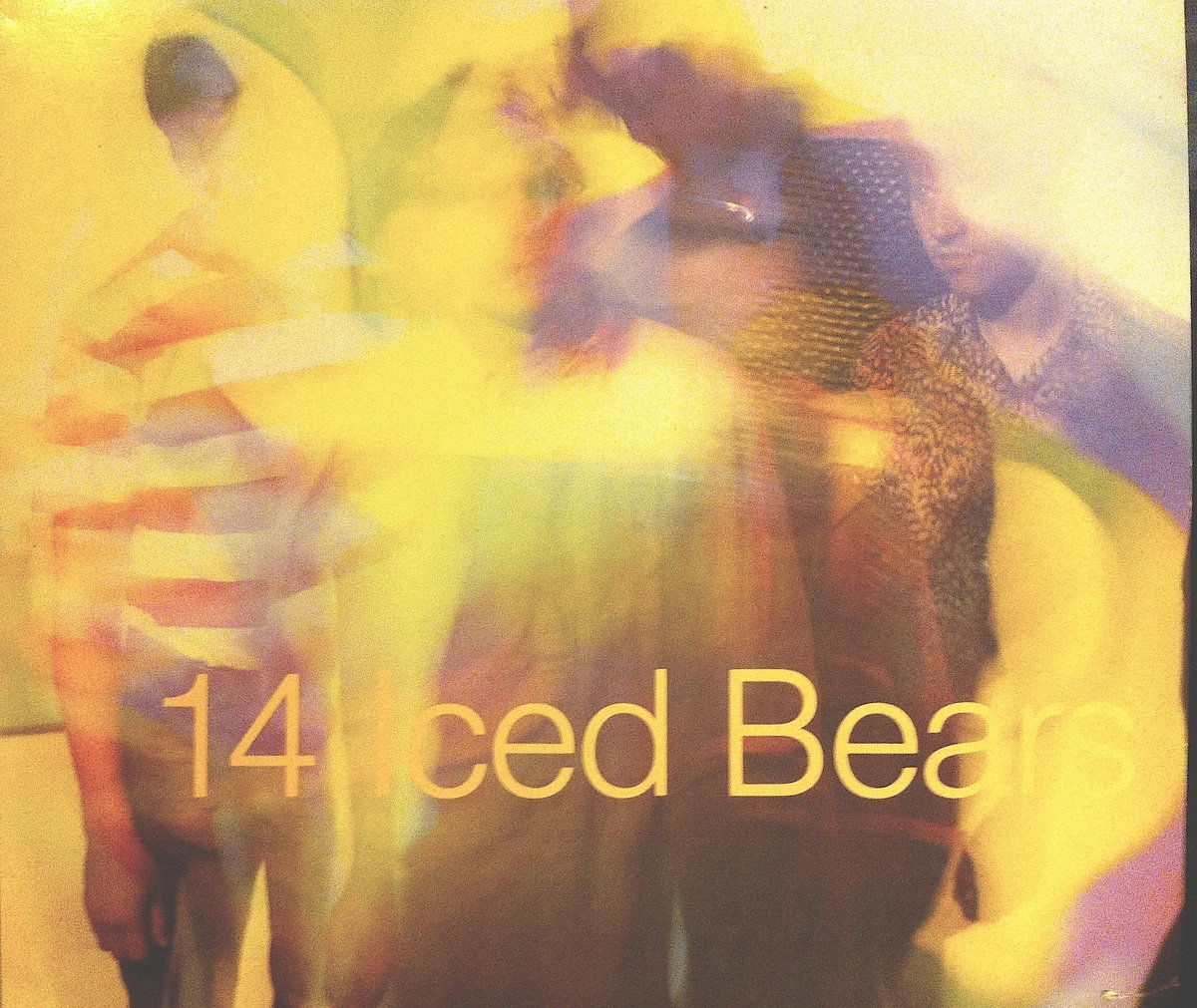
Would you share your insight on the albums’ tracks?
Rob Sekula: ‘Take It’: I remember waking up with the tune and general idea after a pretty big night out in Brighton. A few of us were doing our best to recreate the original summer of love, and all the pleasures that went with it… In the song, I really wanted to use the sounds I was hearing at the Acid House nights that were springing up in Brighton. I had no idea at the time how to get them and my attempts in some parts sound like a squeaky bicycle wheel! I’m actually now, as I’ve just learnt how to recreate the 303 sound on my computer, working on the “original intended mix” of ‘Take It’. If all goes well, I’ll probably release it soon. There’s an exclusive scoop for you!!
‘Holland’: It’s quite strange that I called the song this. It doesn’t make sense although I did love the 1974 World Cup Dutch team with Johan Cruyff their main star. It’s why I made us 14. I had no idea that, about six years later, I would visit Amsterdam and fall in love with the place. I’ve been going virtually every year since and have taught myself Dutch! A real case of predictive text?
‘Train Song’: Very different from the Peel Session version. We were much more into psychedelia by then and it shows, I hope. We were lucky we had producers who really knew what they were doing, in that respect.
‘Moth’s: One of the more personal songs for me. I never told them but this was written about my parents (bit of a clue in the title, with it being the beginning of mother).
‘Hay Fever’: Sort of a “dream song” of a hoped-for partner. At one gig, I asked the universe/God/whatever to make her appear after I sang it. Then a girl came up to me, we fell in love and started a relationship! Nice.
‘Florence’: The shoegaze thing was starting to kick off but I wasn’t into it much as I didn’t hear enough melody. I much preferred psyche. This was my attempt to rectify this, I suppose.
‘Spangle’: Similar journey to ‘Train Song,’ from indie session to a more psychy sound. With the choppy guitar bit, I was inspired by the play of Will Sergeant and the Gang of Four.
‘Dust Remains’: I don’t know where this song came from, it just popped out. But I’m quite proud of the last line: “Only the dust remains, and blows away”. I prefer not to think too consciously about lyrics and more let things come through. That’s how you get surprises.
‘Cut’: One of my favourite Bears songs, I still play it in my solo set. It was written while an ex was getting off with an indie pop star in the room above my head! I’m not naming names!!
‘Surfacer’: Written on the beach in Brighton, watching the waves. I think it was Kev who came up with the chords that had a touch of our tour bus-tape favourite, West Coast Pop Art Experimental Band. It perfectly captured where we were at the time.
Graham Durrant: We redid some songs that we felt needed a fuller sound and added others that we had developed in the rehearsal studios. There were some nice spontaneous creative decisions. I remember in particular a track called “Take it” that features a frantic drum roll all the way through. After about the 4th take my arms couldn’t sustain it all the way to the end and I had to stop a few bars early. So we tagged on that drifty slow bit on the end which I think actually made the track work, I really like that bit.
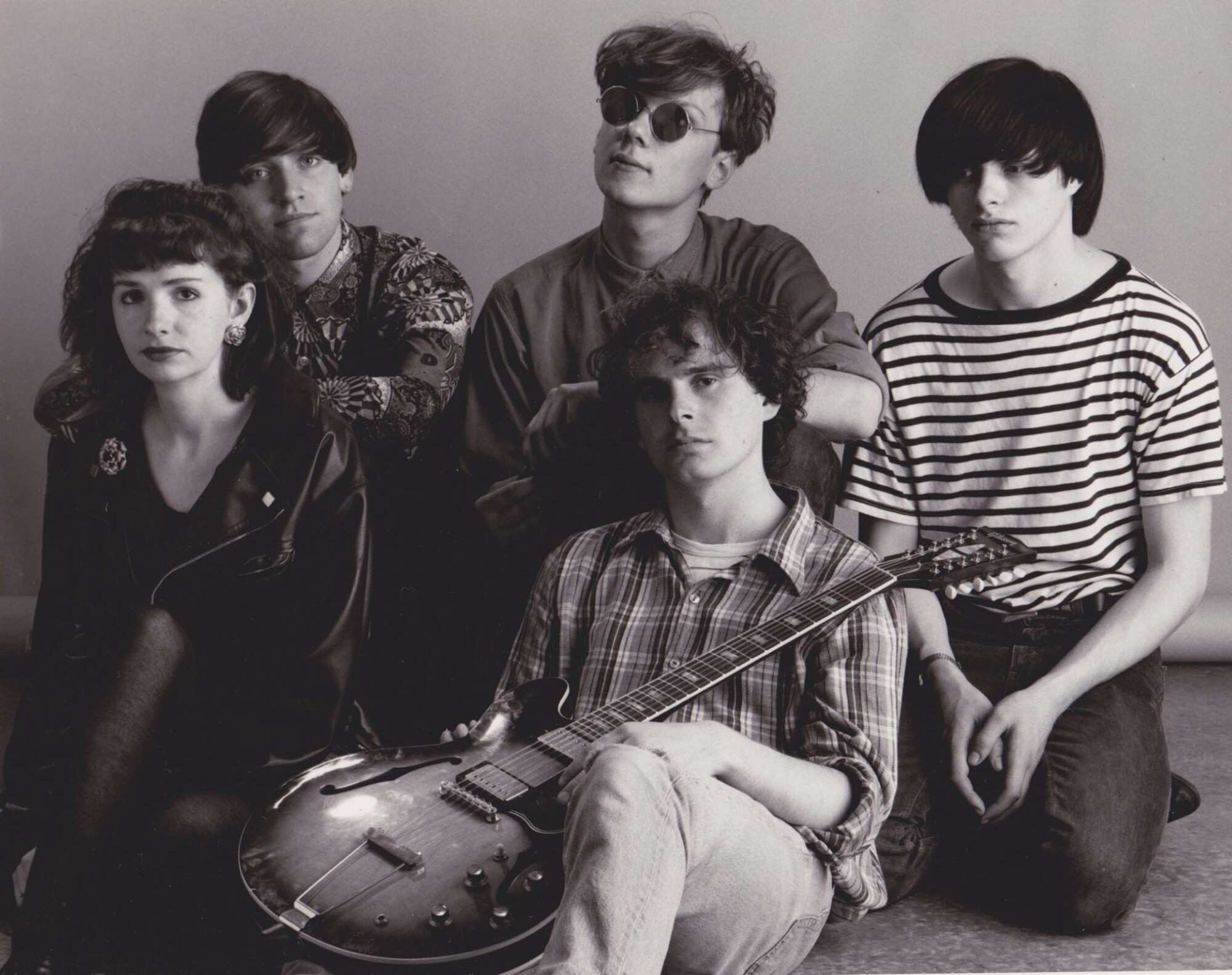
Did you do a lot of shows around the time you released your debut album? What are some bands you shared stages with?
Rob Sekula: We were never very proficient at organising gigs. We got them on a haphazard basis so I don’t think we “toured” the album. Although I do remember we played Drummond’s in Central London at the time, and Will on bass was too ill/tired/mashed to stand up! It was fantastic to play with people like Julian Cope, That Petrol Emotion, Felt, My Bloody Valentine, The Pastels et al, and also long-time legends like Alex Chilton and Moe Tucker.
Graham Durrant: Hard to remember but I’m sure we played at the Camden Falcon and a few other places. Can’t remember who we played with back then.
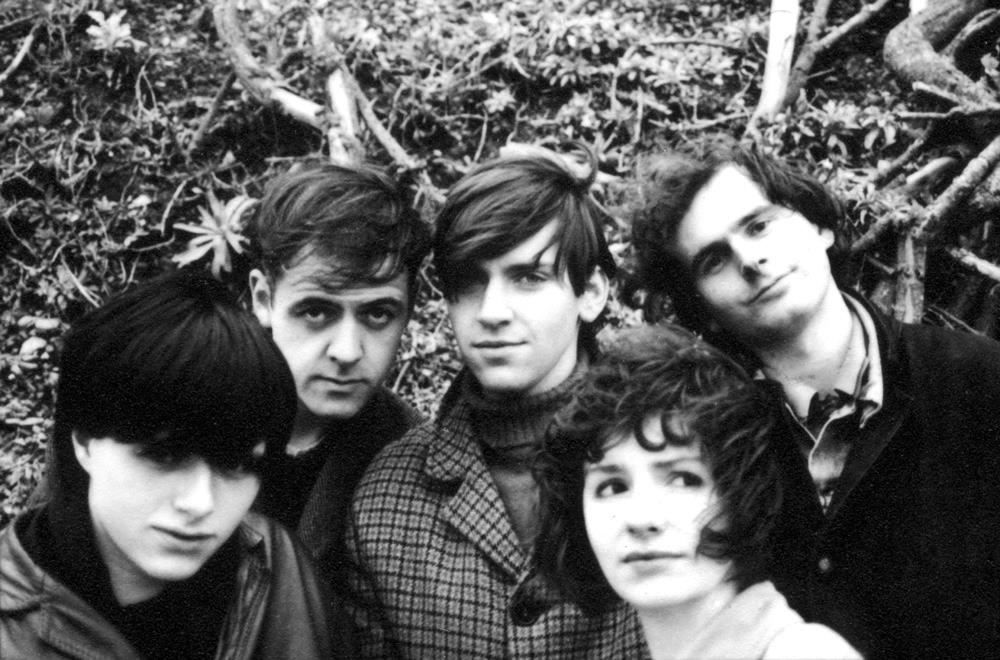
You got praise from John Peel…
Rob Sekula: Yeah, he heard our first single and offered us a session. I was in dreamland when it was broadcast because Peel kept mentioning after each track that he was really into it: “I love the Iced Bears, all 14 of them!”. One of the high points of my life, definitely. I don’t think I’d ever been so excited. I’d spent my late teen years devouring his show. We got another session with him and he played all our subsequent singles. Forever grateful.
Graham Durrant: Yes, he was a fan back in the early days.
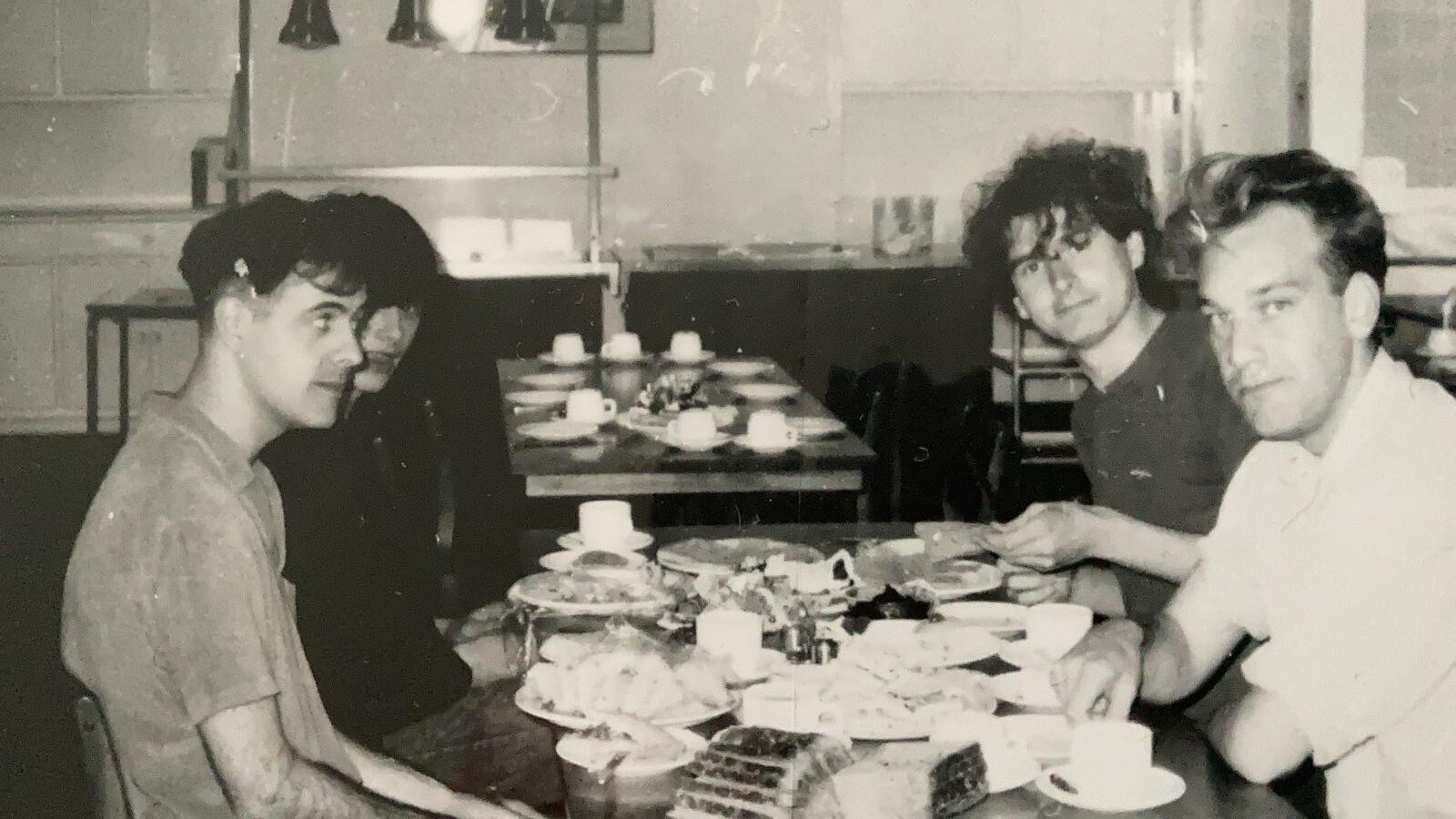
“We’d come up with new stuff every week”
What was the songwriting process like for the band?
Rob Sekula: Usually, I’d come to a rehearsal with a song and we’d build around it or, especially later on, we’d start jamming some chords or a bass line and I’d make up a song over it. We’d come up with new stuff every week, more or less.
Graham Durrant: A lot of jamming things out in the practice studio but people would also bring ideas in that they had worked on outside the studio environment. Rob always came up with the words though. When we did the second album, we actually wrote some of the tracks in the recording studio but we were staying there so there was a fair bit of time to do that.
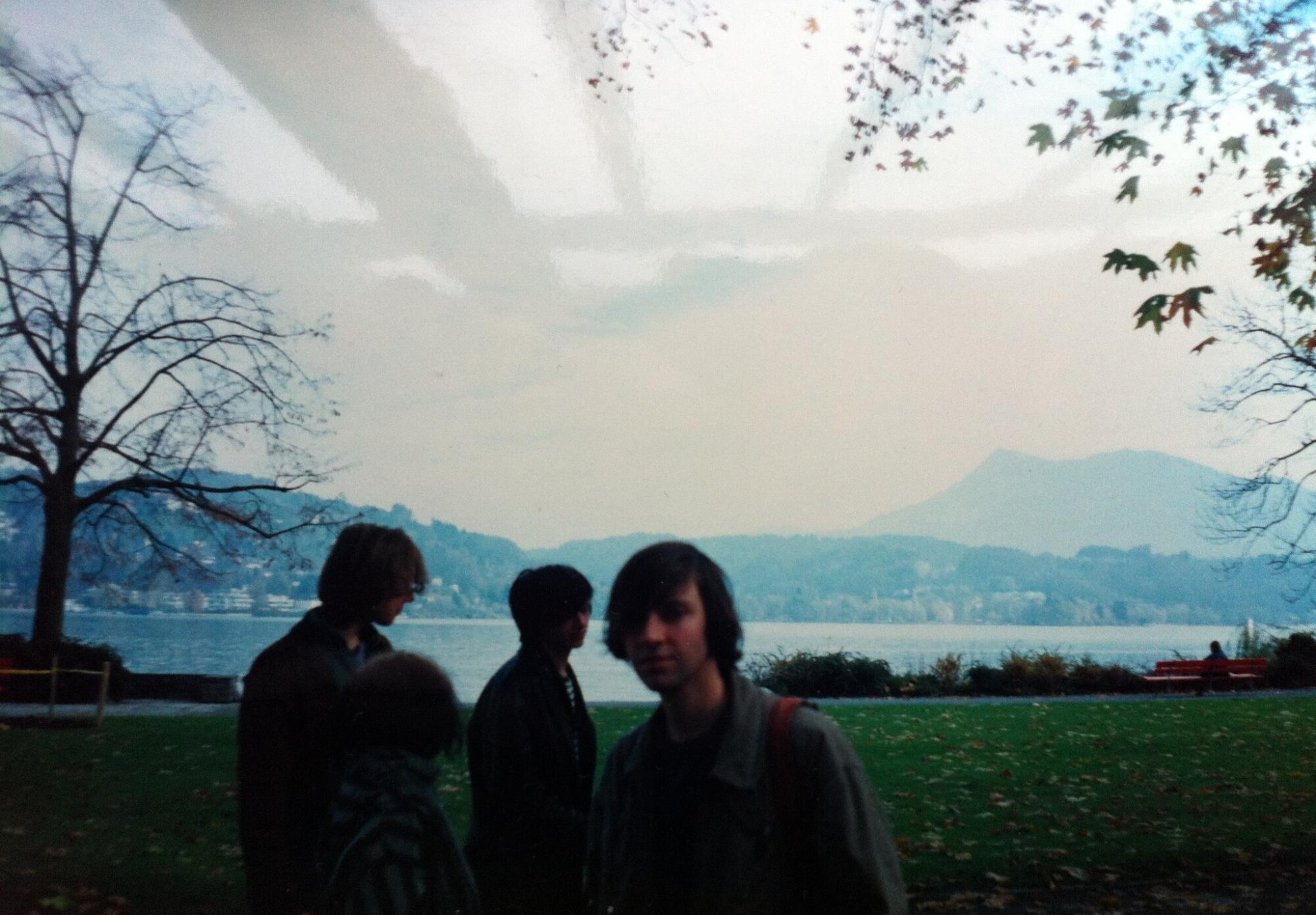
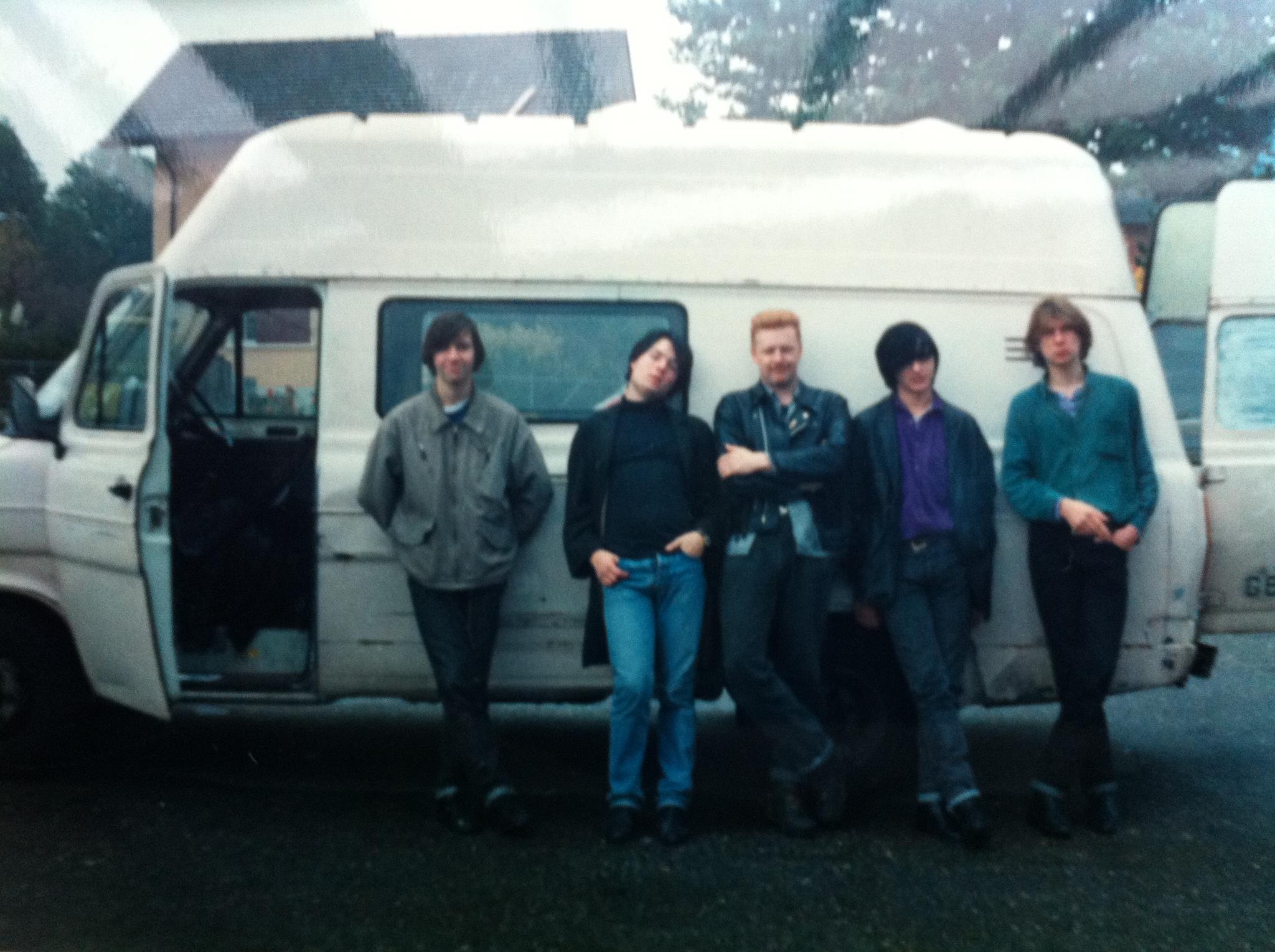
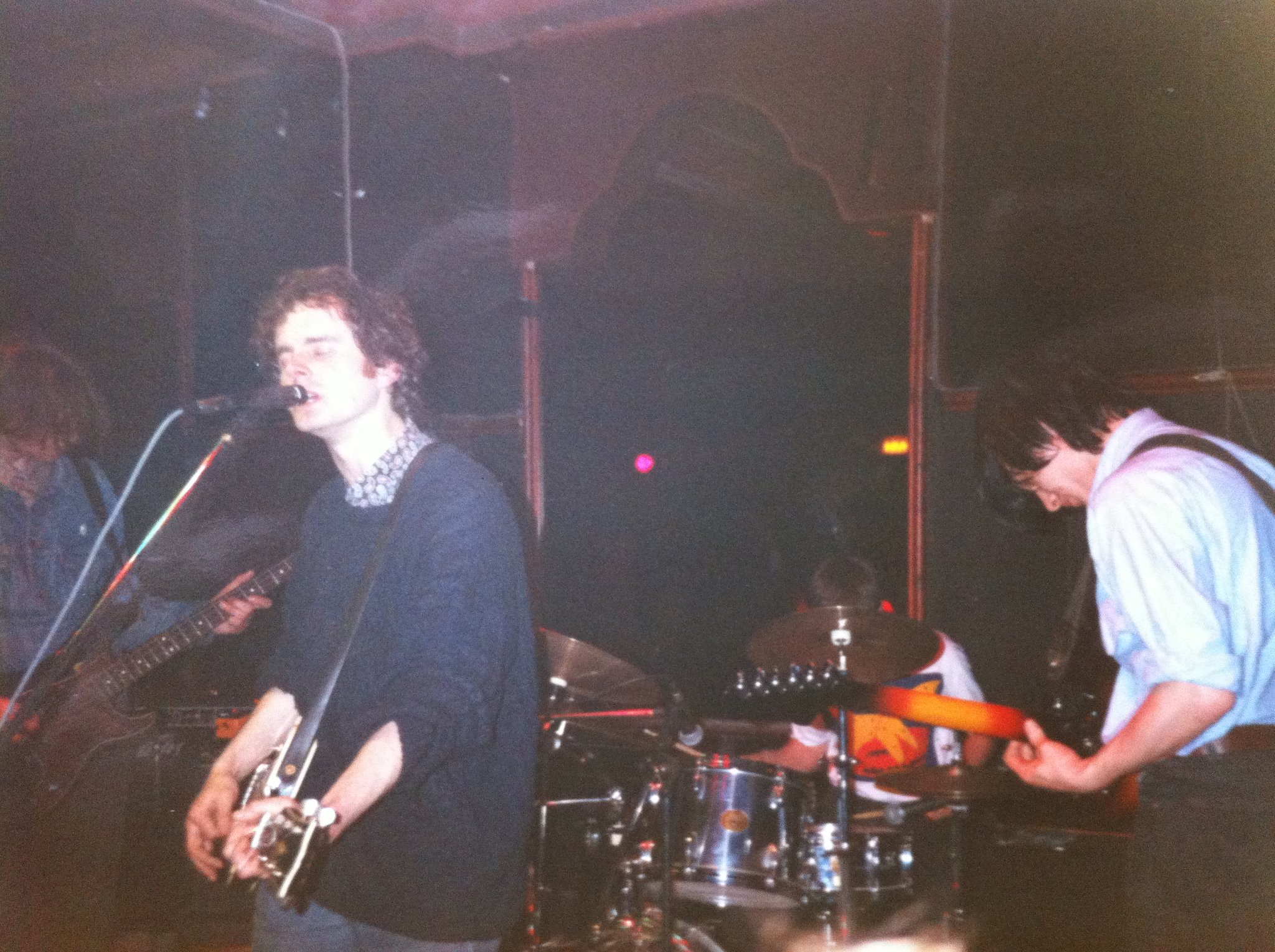
Before your debut album, you released three EP’s, ‘Inside,’ ‘Balloon Song’ and a split with Crocodile Ride, not to mention fantastic singles. Would love to hear about those releases and what are some recollections.
Rob Sekula: Not forgetting the Sarah EP in 1987 with ‘Come Get Me,’ ‘Sure to See,’ and ‘Unhappy Days’. The split with Crocodile Ride was in 1989. ‘Inside’ was the first and came about when Mark Flunder from the TVPs saw us play. He thought our song ‘Jumped in a Puddle’ was a mod classic and wanted to release it. But we ended up doing ‘Inside,’ ‘Cut and Blue Suit’. I really thought ‘Jumped in a Puddle’ was too commercial and we’d be saddled with it. Over optimistic or what!? ‘Balloon Song’ seemed the next obvious single. I was listening to a lot of Burt Bacharach at the time. I hope it shows in the melody. Also on the EP, ‘Like a Dolphin’ had a cheeky reference to ‘Like a Virgin’ in the title but was actually about frustration: “like a dolphin, on a hilltop.” This was with Flunder too. Then came the Sarah EP. We were chuffed to be recording on the label as I loved the Sea Urchins single, ‘Pristine Christine’. We were going through a lot of line-up changes at the time with just Kevin Canham and me constantly and thankfully it settled down for a few years after that, with Graham Durrant (drums) and Will Taylor (bass).
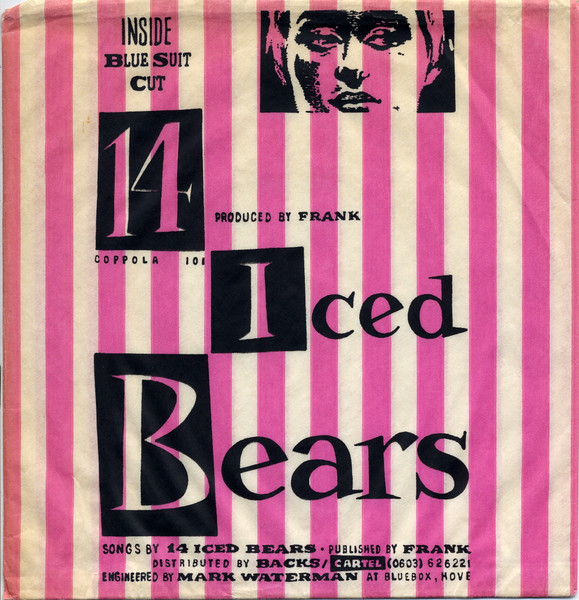
Graham Durrant: In those days, there were a lot of enthusiasts doing fanzines and the like and a lot of tiny labels putting out flexi disks et cetera so we would put out a different record with a different label each time. All with tiny minimum pressing runs because it was all a bit of a cottage industry. It was only Thunderball that actually had any budget. Famously, Sarah gave us a couple of days in a 16 track studio to do their EP but they didn’t have a phone (this is before mobiles existed) so when we started to go over time the only way we could contact them was to send a postcard! We just had to decide to overrun and hope that didn’t mind!
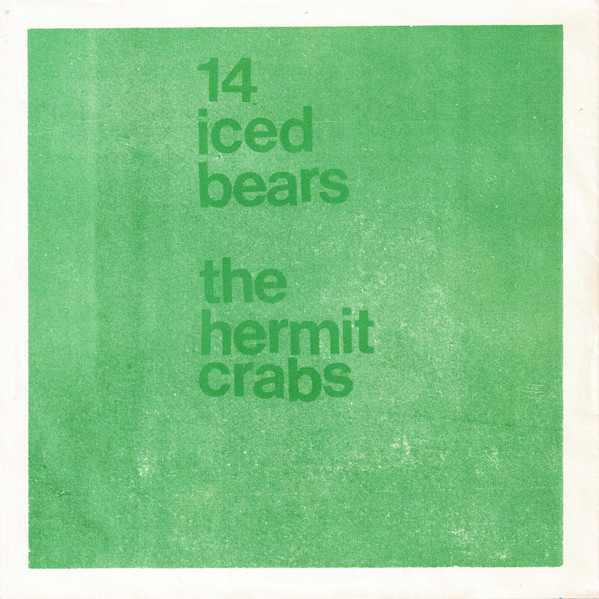
What about your second album, ‘Wonder’? Please share some further words about it.
Rob Sekula: This was about three years after the first album and Tim White was in for Will. We recorded in producer Howard Turner’s studio in a big house in the middle of the Norfolk countryside. He was a friend of Graham’s and had previously produced the Jazz Butcher among others. We all lived there for a week. It was a wonderful experience, being able to concentrate fully on the music, my only interruptions being the solitary country lanes, where the abundant nature I saw fed me the lyrics while I wandered. But ‘Red Now’ was an experiment with amyl nitrate and a mixing desk…
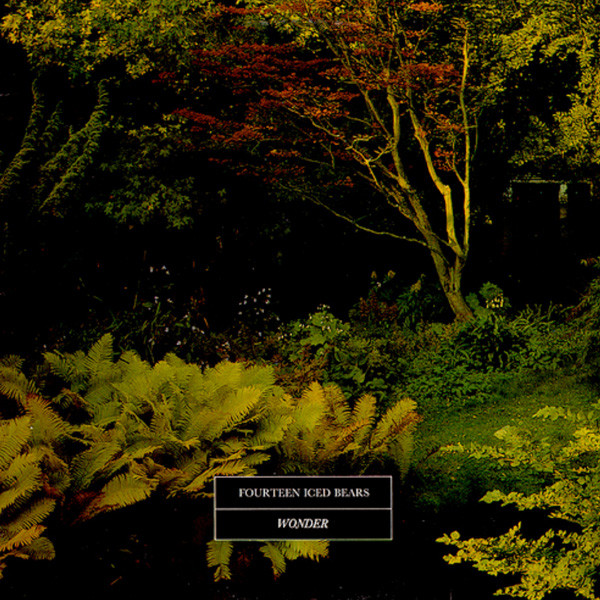
Tim White: ‘Wonder’ was recorded in 1990 at the Norfolk studio of Howard Turner, who produced it. It was great spending a few days in the Norfolk countryside recording and then returning a week or so later to mix. I recall the mix of the last track ‘Red Now’ being particularly chaotic. It was late and we were all a little tired and emotional… I think the result speaks for itself…
Graham Durrant: It was great fun working in the live-in studio in the country and walking about 2 miles to the nearest pub in the evening. The engineering on that album is brilliant, the best drum sound I ever had.
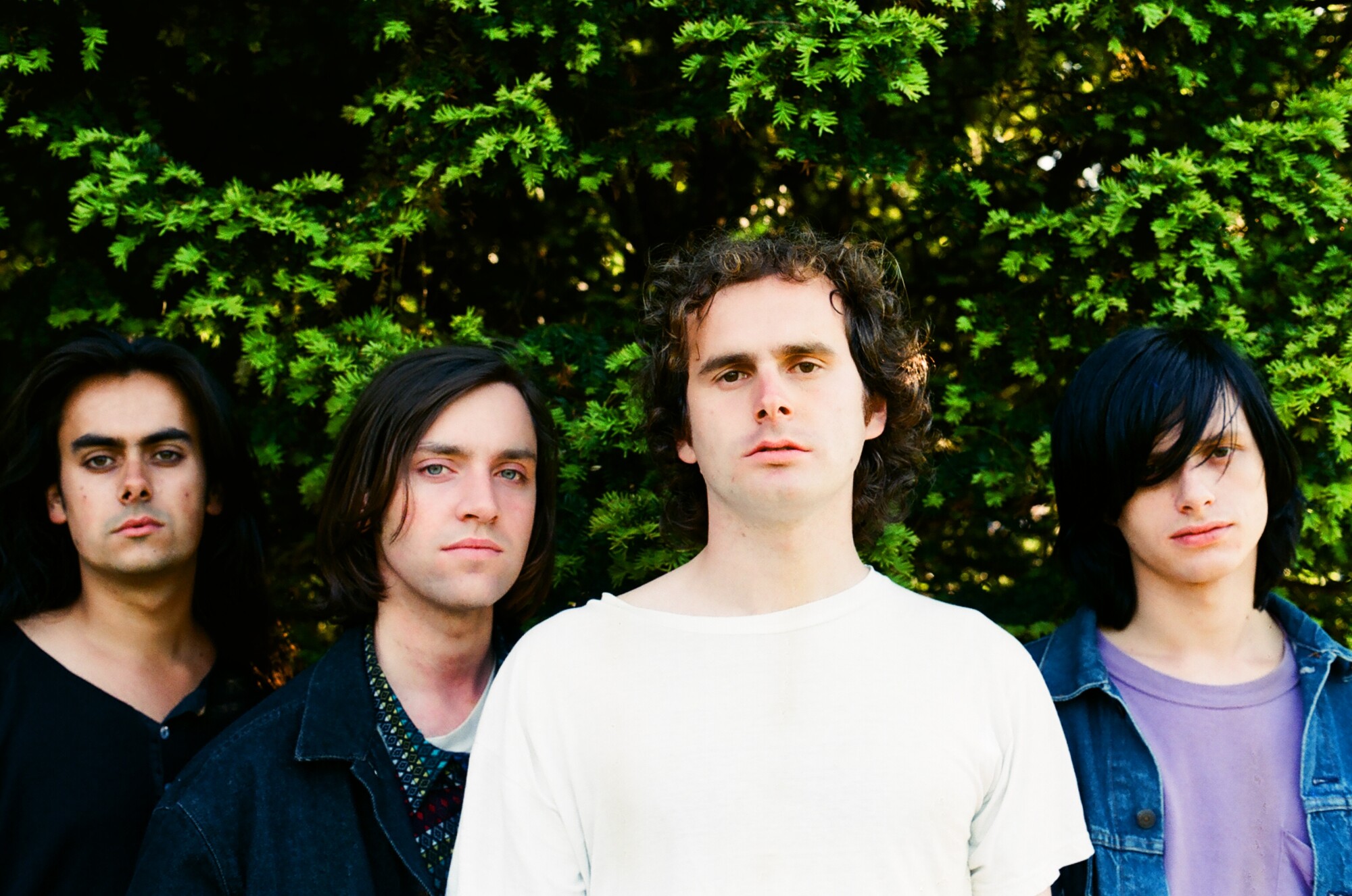
What was it like for you to reform about a decade ago?
Rob Sekula: It was wonderful to play the old stuff again. It was mainly as a three piece, Tim, Graham and me. After our years away, as musicians we were much better and it was probably the best we’d played live. We toured the US twice, first the east then the west coast, also playing Paris and around the UK. It was sweet to see the people who liked us, young and old, and some had travelled from all over the States. We ended up recording some songs at Robert Bartholomew from the Brian Jonestown Massacre’s house in Los Angeles, along with the touring June Brides and the local Aberdeen. This came out a few years later as the ‘Three Wishes’ EP.
Tim White: Getting back together in 2010 was surprisingly fun – Rob, Graham and I managed to perform as a three-piece without losing too much of the signature jangly guitar Bears sound. The main reason behind the reformation was a short East Coast US tour in 2010 which was followed by the West Coast in 2011 – You can witness a bit of the East Coast tour on YouTube in a little film I made entitled ‘Dust Remains’ Pts 1 & 2.
Graham Durrant: It was almost like we had never had a break even though I hadn’t played drums at all for six years. A couple of rehearsals and it all came back. The two US tours that followed were legendary. It was proper road trip stuff and some of the best gigs any of us have ever played. Absolutely fantastic!
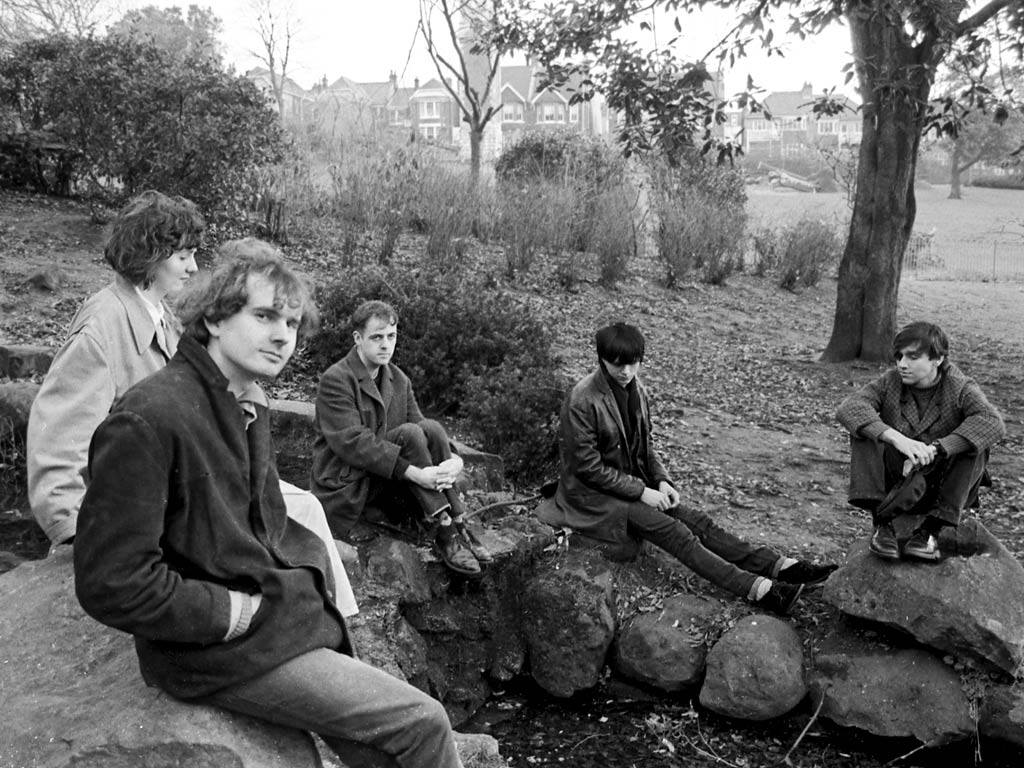
What currently occupies your life?
Rob Sekula: I’m doing solo stuff now, and have released 2/3 singles: ‘Pamela’ and ‘Not Santa Claus’ (two versions). They’re all on Bandcamp, along with the 14 Iced Bears stuff. I’m playing electric solo live with a set that’s about half solo songs and half Bears. I’m supporting The Vaselines in March in London, after playing with them in Newcastle last summer. I always thought I’d be too scared to play solo but I love it now. It’s so direct and immediate. I’m also really into meditation and have developed a form of yoga/meditation called Body Meditation. I have a Twitter/Facebook page to explain it all. I’m also a strong advocate for cannabis legislation. It’s ridiculous that it’s still so restricted in the UK when it’s so beneficial in so many ways.
Tim White: I am a photographer and currently live in St Leonards on Sea, E Sussex – Rob actually visited last weekend.
Graham Durrant: I work in the e-learning industry which is semi-creative but there are worse ways to make a living. I still play drums regularly and do occasional gigs, more so now that my kids are teenagers. I recently played with my daughter’s band at a street party doing covers of songs by The Police, The Jam and Radiohead which was really fun (1st time I’ve ever done a covers band). I think you just get better as a musician the older you get and I can confidently say I’m playing better now than at any other time in my life and probably enjoy it more too.
Is there any unreleased material by 14 Iced Bears or any related project?
Rob Sekula: There’s a Peel session vinyl EP hopefully coming out soon. Also, there’s the Acid House version of ‘Take It’ I mentioned earlier.
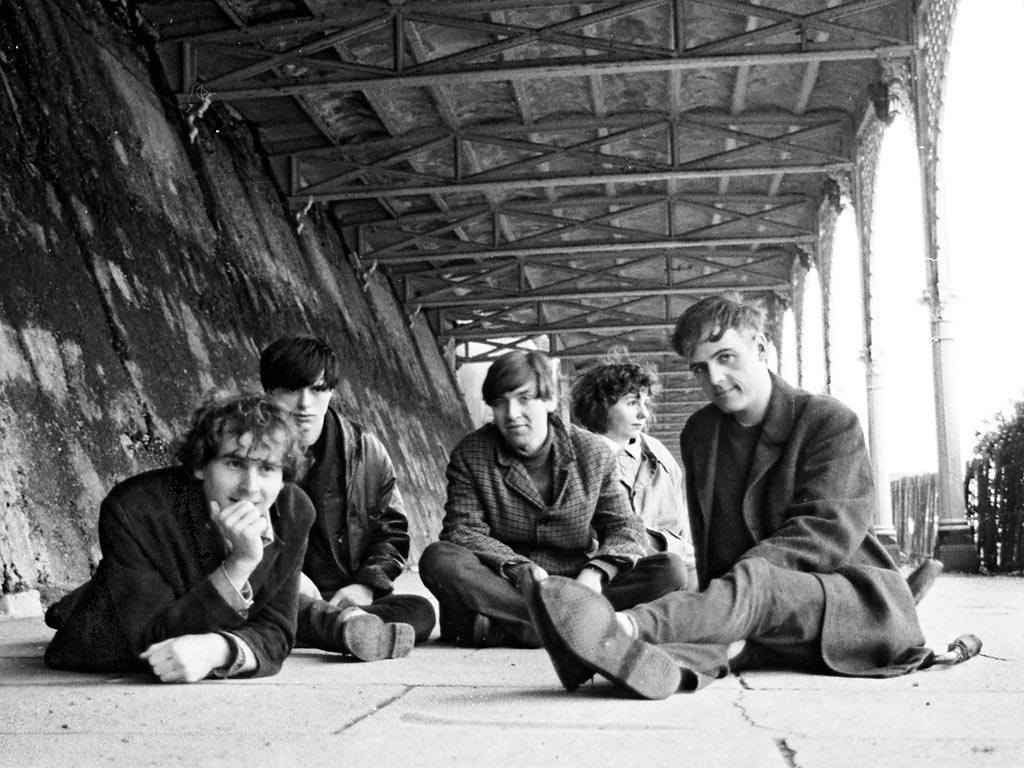
Looking back, what was the highlight of your time in the band? Which songs are you most proud of? Where and when was your most memorable gig?
Rob Sekula: I loved being in a band so much it’s hard to say. Just the lifestyle of touring in a van, ending up somewhere to play to people, sleeping on strangers’ floors, I loved the sense of freedom and adventure as you never knew what was going to happen. And all the while, underneath it all playing the songs I really loved. I’m so grateful to have had it for a while. Song-wise, that’s difficult. I would only put a song out if I loved it anyway. With a (pop) gun to my head, I’d possibly say ‘When it Comes’ from the ‘Wonder’ LP, and ‘Cut’. I still play those two live, as well as a few others. Talking of live, probably supporting my musical hero Alex Chilton in 91/92 at the Zap Club, Brighton. After we played, he even told me backstage that he really liked our stuff. That’s probably the best sentence I’ve ever heard!
Tim White: It was nice to be part of the Bears history and working on the second album – ‘Hold On’ a memorable single. Also going out on the US tours was definitely a highlight. We headlined some great venues and were well received by knowledgeable audiences. Also recording a radio session in LA at BJMs studio, later released on vinyl as part of the ‘Three Wishes – Part Time Punks Sessions’.
Graham Durrant: Coming on as the last band on the last day of the San Francisco popfest to a packed and very enthusiastic audience and doing a top performance. Doesn’t get better than that.
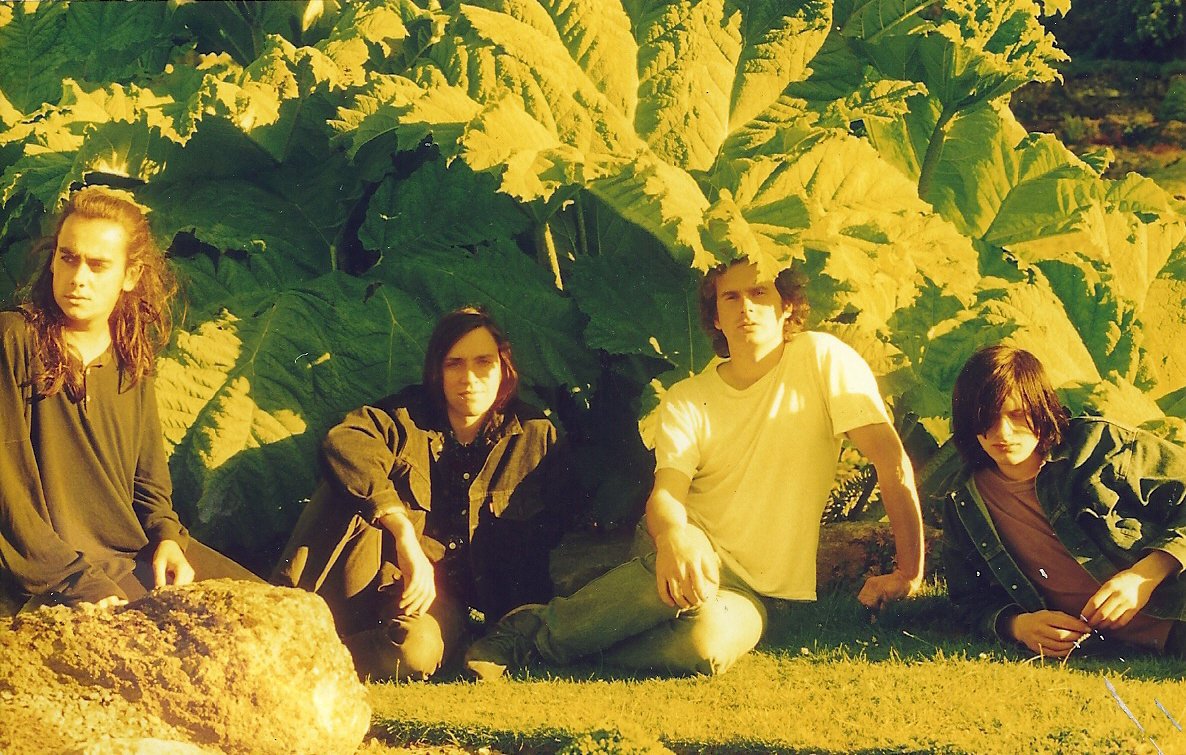
Thank you for taking your time. Last word is yours.
Rob Sekula: Thank you for getting in contact, Klemen. It’s great to know that people get something out of our stuff all these years later, and encourages me to stay on this merry go round!
Tim White: That’s as good a word as any.
Graham Durrant: I’m really proud of what we did in the Bears and it’s so nice that a much wider audience can access our stuff now in the streaming age when we did so many 1k pressings that are so rare now. The song is what will always endure and we did some great songs.
Klemen Breznikar
Headline photo: 14 Iced Bears (1988) | Stephen Ormsby, Kevin Canham, Graham Durrant, Sue Freeman, Robert Sekula | Photo by James Duncalf
14 Iced Bears Facebook / Instagram / Twitter / Bandcamp
Optic Nerve Recordings Official Website / Facebook / Instagram / Twitter / Bandcamp / YouTube

